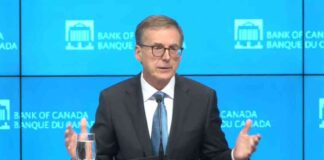The dollar, which has been dominating the currency markets recently, took a step back last week. However, this slight retreat doesn’t necessarily mean that the upward momentum of the greenback is over. It seems that the dollar is just pausing before the upcoming US presidential election. Despite this pause, the dollar still has the potential for more gains, especially if Treasury yields continue to rise and if post-election events lead to risk aversion.
Euro managed to outperform the dollar last week, becoming the strongest currency. This was supported by strong economic data from the Eurozone, which reduced the need for aggressive monetary easing by the ECB. However, Euro’s weakness towards the end of the week against both Dollar and Sterling raises concerns about the sustainability of its rally. The New Zealand Dollar also performed well, ending the week as the third strongest currency.
On the weaker end, the Australian Dollar struggled as progress in disinflation opened the door for potential RBA rate cuts next year. The Japanese Yen was the second weakest currency, showing a disconnect from Japanese stock markets. The Canadian dollar ranked third among the weakest currencies.
Sterling had a volatile week, fluctuating between losses and gains, and ultimately settling in the middle. Meanwhile, the Swiss Franc managed to hold its ground in the middle, despite a sell-off due to weaker inflation data, likely supported by its status as a safe-haven currency amid global tensions.
The market was mostly unfazed by the October non-farm payroll report in the US, as investors were cautious ahead of the presidential election and the FOMC rate decision. Expectations for Fed policy easing remained consistent, with high probabilities of rate cuts in the upcoming meetings. The strength in Treasury yields continued, indicating confidence in fiscal policies driving yields higher regardless of the election outcome.
The mid-week selloff in US equities raised concerns about whether this was just pre-election jitters or the start of a sustained reversal. Technical analysis suggests a bullish outlook for the 10-year yield, with potential for further gains. In the stock market, the focus is on key support levels to determine future trends.
While the dollar seemed poised for a pullback after the weak job growth report, it managed to rebound and remain strong. Technical analysis points to potential further gains for the dollar index if certain resistance levels are broken.
In Europe, the Euro showed resilience due to positive economic data, while the Swiss Franc faced pressure from declining inflation. The UK experienced volatility in Sterling due to fiscal policy concerns. Discussions around central bank actions and economic data continue to impact currency movements.
Overall, the currency markets remain dynamic and responsive to various factors, with potential for further shifts in the coming weeks.

















